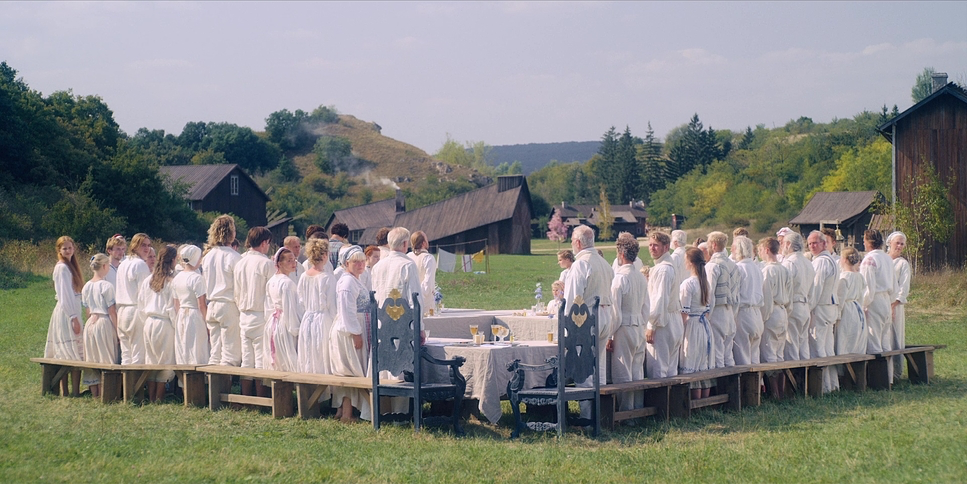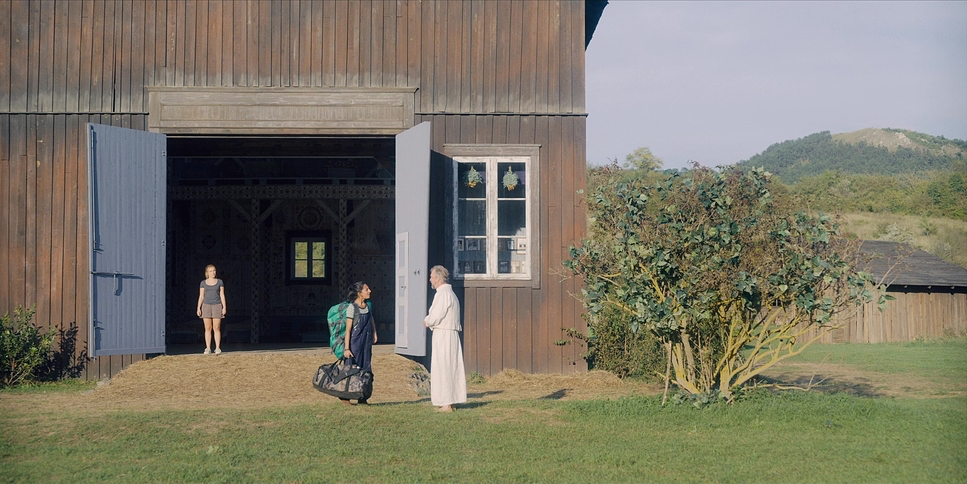Hello, I’m Salik Waquas, a filmmaker and professional colorist passionate about exploring the intersection of storytelling and visual artistry. As the owner of a post-production color grading suite, I spend much of my time analyzing and enhancing the emotional impact of cinematic visuals. One film that has profoundly influenced my perspective on modern cinematography is Midsommar. Directed by Ari Aster and brought to life through the lens of Pawel Pogorzelski, this horror masterpiece challenges genre norms with its hauntingly beautiful visuals. Here’s my personal analysis of its cinematography, delving into what makes it a standout in both horror and visual storytelling.
About the Cinematographer

Pawel Pogorzelski’s work in Midsommar is nothing short of revolutionary. As a frequent collaborator with Ari Aster, Pogorzelski previously worked on Hereditary, where he showcased his talent for creating emotionally resonant and visually arresting images. In Midsommar, he breaks away from horror conventions, forgoing dark, shadowy aesthetics in favor of vibrant daylight. The decision to bathe the eerie Hårga commune in natural light subverts expectations and heightens the unease, forcing audiences to confront every unsettling detail.
I deeply admire Pogorzelski’s ability to blend picturesque landscapes with an undercurrent of dread. Each frame feels meticulously crafted to unsettle viewers while maintaining a deceptive beauty. As a filmmaker, his approach inspires me to consider how light, color, and composition can subvert traditional storytelling techniques.
Inspiration for the Cinematography of Midsommar

Ari Aster aptly described Midsommar as “The Wizard of Oz for perverts,” and Pogorzelski translated that vision into a stunningly vivid visual language. Much like The Wizard of Oz, the film transitions from a somber, muted reality to a technicolor dreamscape. However, the dream quickly reveals itself as a nightmare, with Swedish folklore and pagan traditions adding layers of authenticity and menace.
Drawing inspiration from European folk horror films like The Wicker Man and from Scandinavian art, Pogorzelski and Aster crafted a world that feels both grounded and surreal. They studied Swedish paintings and photography to capture the interplay of light and nature. For me, the meticulous research behind these visuals serves as a reminder of how cultural and historical references can elevate a film’s authenticity and emotional impact.
Camera Movements Used in Midsommar

The camera movements in Midsommar are a masterclass in unsettling storytelling. Pogorzelski employs disorienting techniques, like the inverted aerial shot as the group enters the commune, symbolizing their descent into an alien world. This single shot speaks volumes, immediately signaling the audience that they’ve entered a place where the normal rules don’t apply.
Slow pans, long takes, and deliberate dolly shots create a hypnotic rhythm, mirroring the characters’ growing disorientation. When Dani, the protagonist, takes hallucinogens, the camera warps and blurs her surroundings, making the audience feel her altered perception. These choices resonate deeply with me as a filmmaker—they demonstrate how movement can heighten emotion and draw viewers into the characters’ psychological states.
Compositions in Midsommar

One of the most striking aspects of Midsommar is its symmetrical compositions. The structured, ritualistic lives of the Hårga commune are echoed in the framing, which often adheres to the rule of thirds or centers characters with painterly precision. The contrast between this order and the chaotic horror unfolding within these frames creates a chilling effect.
For example, the Ättestupa ritual is framed symmetrically, emphasizing the communal significance of the act. The camera remains unflinching, forcing the audience to absorb every moment. In another standout scene, Dani is crowned as the May Queen. Her floral crown and dress consume the frame, creating an overwhelming sense of both beauty and suffocation. As a colorist, I appreciate how this visual storytelling uses composition to evoke both awe and dread.
Lighting Style of Midsommar

In stark contrast to most horror films, Midsommar embraces natural light. The perpetual daylight of the Swedish summer becomes a source of discomfort, leaving no shadows to hide in. This omnipresent brightness paradoxically feels oppressive, exposing every unsettling detail of the Hårga’s rituals.
The lighting shifts subtly throughout the film to convey mood. The cold, sterile tones of Danny’s apartment at the beginning contrast sharply with the warm, golden hues of the commune. This visual transition mirrors Danny’s emotional journey, from isolation to a toxic sense of belonging. As a colorist, I find Pogorzelski’s use of light particularly inspiring—his ability to manipulate natural lighting to create atmosphere is a lesson in itself.
Lensing and Blocking in Midsommar

Pogorzelski’s lensing choices contribute significantly to the film’s ethereal quality. Wide-angle lenses capture the vast Swedish landscapes, creating a sense of isolation despite the openness. In contrast, tighter close-ups draw viewers into the characters’ emotions, often emphasizing subtle expressions that reveal their inner turmoil.
Blocking, too, is meticulously planned. Dani is frequently positioned at the periphery of the frame early in the film, underscoring her alienation. As the story progresses, she becomes more central, culminating in her May Queen coronation, where she is both physically and symbolically elevated. Watching these shifts unfold was a revelation for me, highlighting how lensing and blocking can visually narrate character arcs.
Color Grading of Midsommar

The color grading in Midsommar is a testament to the power of intentional visual design. The film’s palette is dominated by saturated greens, yellows, and blues, creating a hyperreal aesthetic that feels both inviting and unnatural. This deliberate oversaturation enhances the idyllic setting while masking its underlying horrors.
The bright whites of the Hårga’s clothing serve as a stark contrast to the graphic violence of their rituals. These whites become a canvas for the film’s bloodier moments, making them even more jarring. As a colorist, I admire how Pogorzelski’s grading choices reinforce the film’s themes, turning color into a storytelling device.
Technical Aspects of Midsommar
| Genre | Drama, Horror, Mystery, Psychedelic, Occult, Psychological Horror, Thriller, Folk Horror |
| Director | Ari Aster |
| Cinematographer | Pawel Pogorzelski |
| Production Designer | Henrik Svensson |
| Costume Designer | Andrea Flesch |
| Editor | Lucian Johnston |
| Colorist | Roman Hankewycz, Joe Gawler |
| Time Period | 2010s |
| Color | Cool, Desaturated |
| Aspect Ratio | 2.00 – Spherical |
| Format | Digital |
| Lighting | Soft light, Low contrast |
| Lighting Type | Daylight |
| Story Location | Sweden > Hårga |
| Filming Location | Hungary > Budapest |
| Camera | Panavision DXL |
| Lens | Panavision Primo Primes, Panavision Primo 70s |
From a technical standpoint, Midsommar is a marvel. Pogorzelski used the ARRI Alexa LF camera with Panavision lenses to achieve the film’s sharp yet organic look. The large-format camera captured the intricate production design and sweeping landscapes with remarkable clarity.
The editing by Lucian Johnston and Jennifer Lame complements the cinematography beautifully, with seamless transitions that enhance the film’s dreamlike quality. The sound design and score by Bobby Krlic (The Haxan Cloak) further immerse viewers, blending ethereal melodies with unsettling dissonance. As a filmmaker, I find the integration of these technical elements deeply inspiring—it’s a reminder that every detail contributes to the final emotional impact.
Conclusion
Midsommar is more than a horror film—it’s a visual and technical triumph. Pawel Pogorzelski’s cinematography redefines the genre, proving that horror doesn’t need darkness to terrify. His bold choices in lighting, composition, and movement create a world that is as beautiful as it is unsettling.
As a filmmaker and colorist, I see Midsommar as a masterclass in visual storytelling. It’s a film that lingers, its haunting imagery and innovative techniques leaving a lasting impression. For anyone passionate about cinema, Pogorzelski’s work is a compelling example of how visuals can elevate narrative, transforming a story into an unforgettable experience.
- Also Read: CINEMATOGRAPHY ANALYSIS OF MESHES OF THE AFTERNOON
- Also Read: CINEMATOGRAPHY ANALYSIS OF MEMENTO (IN DEPTH)
Browse Our Cinematography Analysis Glossary
Explore directors, cinematographers, cameras, lenses, lighting styles, genres, and the visual techniques that shape iconic films.
Explore Glossary →